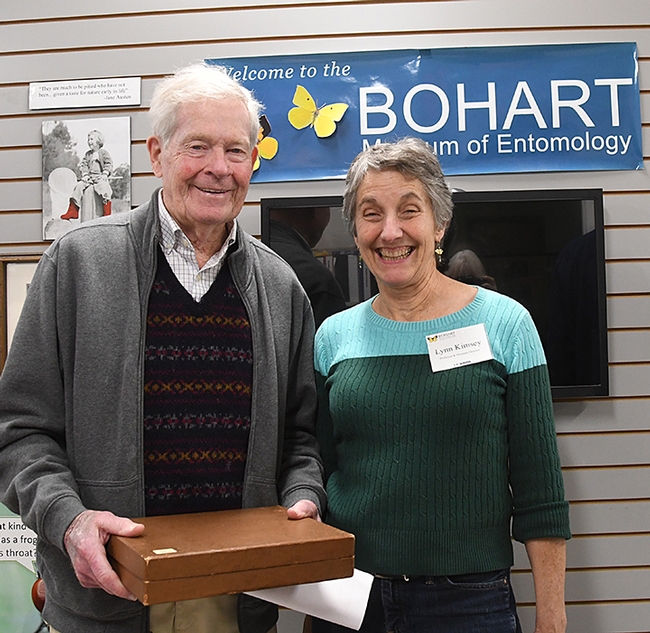
The scientists and butterfly/moth enthusiasts who gathered Saturday, Feb. 9 for the Northern California Lepidoptera Society meeting in the Bohart Museum of Entomology at the University of California, Davis, did all that: identify specimens and engage in collaboration and camaraderie.
They ranged from those early in their career, to mid-point, to the height of their career, to retired.
The group meets for a mid-winter gathering once a year, alternating between the Bohart Museum of Entomology at UC Davis and the Essig Museum of Entomology at UC Berkeley.
Senior museum scientist Steve Heydon, Bohart associate John "Moth Man" DeBenedictis; and Jeff Smith, curator of the butterfly/moth section at the Bohart hosted the event, assisted by Lynn Kimsey, director of the Bohart Museum and Bohart associate and naturalist Greg Kareofelas.
In their meeting notice, Heydon, DeBenedictis and Smith noted that those attending could bring specimens, photos, PowerPoint presentations "or slides from collecting trips and tales of collecting triumphs to share with others
and that "attending lepidopterists may be able to help you identify specimens and the museum collection will be open for yoour inspection."
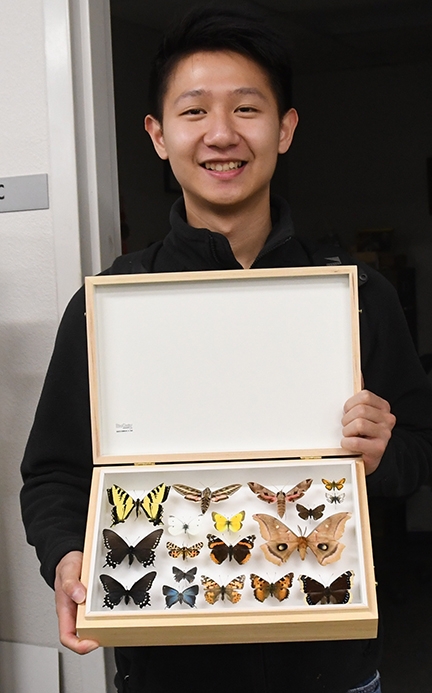
Retired public health entomologist and Bohart associate Dick Meyer of Bakersfield, known as "the mosquito guy," was there. He recently retired as assistant manager of the Orange County Vector Control Agency. He did not bring any of his collection, but he did tell us that he has 225 drawers of insects at home, including 71 drawers of butterflies. "Did you know that the highest diversity of butterflies in the country is in Kern County?" he asked. Meyer, who holds a doctorate in entomology, studied with major professor Richard M. Bohart Jr., for whom the Bohart Museum is named.
Among those participating:
- Bohart associate Jerry Powell, emeritus director of the Essig Museum, and co-author of California Insects.
- Marc Epstein, senior insect biosystematist for the California Department of Food and Agriculture and author of the book, Moths, Myths and Mosquitoes: the Eccentric life of Harrison G. Dyer Jr.
- Kelly Richers, treasurer of the Lepitopterists Society and an affiliate of Essig Museum of Entomology who is also afield associate with the Los Angeles County Museum of Natural History and member of board of directors of the Wedge Entomological Research Foundation
- Lawrence "Larry" Allen of Calaveras County, author of A Field Guide to the West Coast Butterflies of the United States, one of the books available in the Bohart Museum's gift shop (he donated all sales of his book that day to the Bohart).
- Arthur Shapiro, UC Davis distinguished professor of evolution and ecology and author of Field Guide to Butterflies of the San Francisco Bay Area and Sacramento Valley Regions.
- Entomologist Rick Kelson, who directs the butterfly habitat at Six Flags Discovery Kingdom, Vallejo
- Bohart associate Bill Patterson, former graduate student of Richard Bohart
- Rosser Garrison, research associate with the California State Collection of Arthropods, retired senior insect biosystematist, California Department of Food and Agriculture, and co-author of Dragonfly Genera of the New World: An Illustrated and Annotated Key to the Anisoptera
- Don Miller, professor at Chico State University who teaches entomology in the Department of Biological Sciences
- Ryan Hill, professor at University of Pacific, Stockton
- Chris Tenney, retired educator from Pacific Grove
- Jeffrey Caldwell, known for his ecological restoration
- John Lane, one of first graduate students of Art Shapiro (Lane received his master's degree)
- Paul Johnson, biologist with the National Parks Service
- Hobbyist Jeff Baier of Napa
- Physician Val Albu of Fresno
- And many more...
At the last gathering in the Bohart, Kelly Richers, who compiles the California Moth Specimen Database, maintained at the Essig Museum since 1996 as a resource to better survey and understand California moths, said of the systematists: "We're a dying breed."
This year self-described "aspiring entomologist" Madison Cunha of Modesto attended with her mother, Christine Cunha. True to her love of insects, Madison wore a dress adorned with a beetle pattern.
Scientists say that 180,000 species of the Lepidoptera are described, in 126 families and 46 superfamilies.
"The Lepidoptera are among the most successful groups of insects. They are found on all continents, except Antarctica, and inhabit all terrestrial habitats ranging from desert to rainforest, from lowland grasslands to mountain plateaus, but almost always associated with higher plants, especially angiosperms (flowering plants). Among the most northern dwelling species of butterflies and moths is the Arctic Apollo (Parnassius arcticus), which is found in the Arctic Circle in northeastern Yakutia, at an altitude of 1500 m above sea level. In the Himalayas, various Apollo species such as Parnassius epaphus have been recorded to occur up to an altitude of 6,000 miles above sea level."--Wikipedia.
Attached Images:
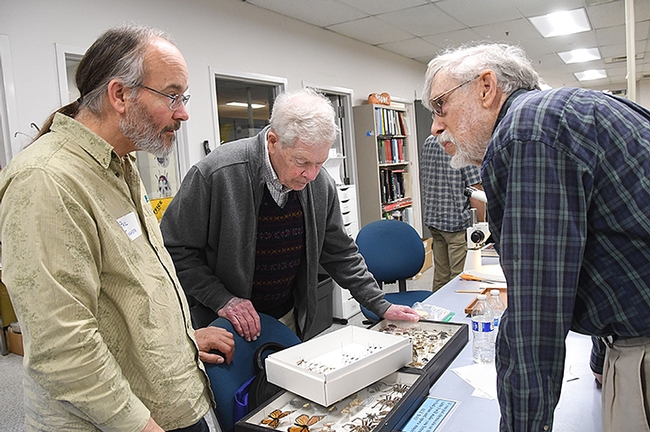
Lepidopterists (from left) Paul Johnson, Jerry Powell and Bill Patterson discuss butterfly species. (Photo by Kathy Keatley Garvey)
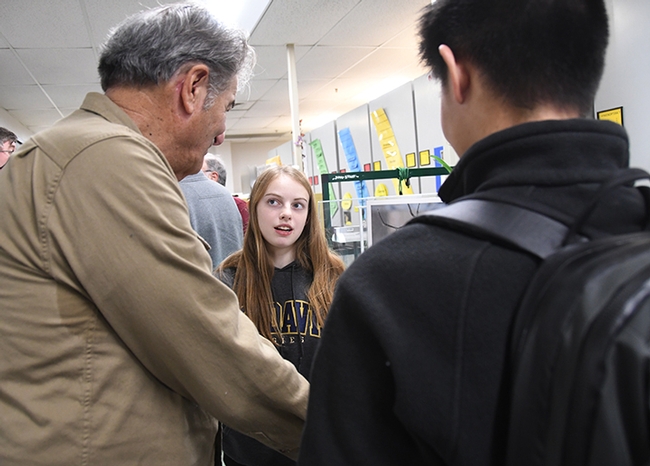
UC Davis entomology student Gwen Erdosh chats with Bohart associate Greg Kareofelas (left) and Christopher Jason, new UC Davis graduate in environmental science. (Photo by Kathy Keatley Garvey)
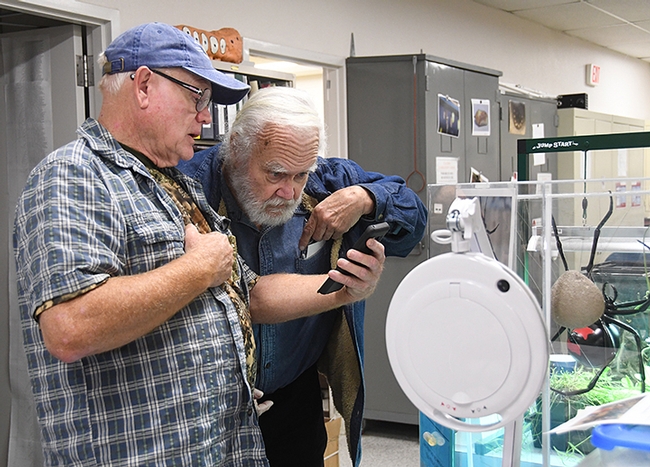
Dick Meyer, who holds a doctorate in entomology from UC Davis, clarifies a butterfly question with hobbyist Jeff Baier of Napa. (Photo by Kathy Keatley Garvey)
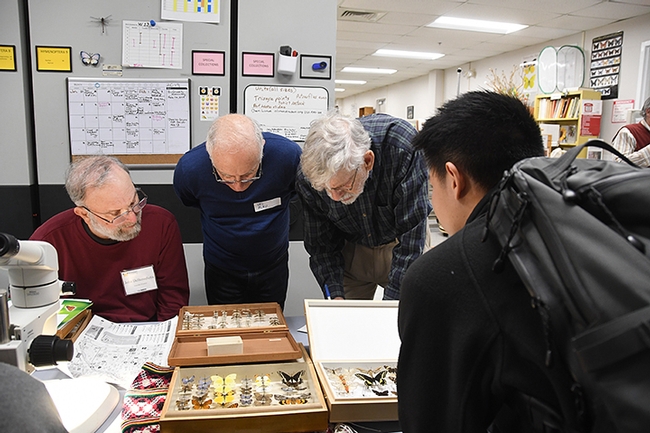
Butterfly conversation with (from left) John DeBenedictus, Val Albu, Bill Patterson and Christopher Jason. (Photo by Kathy Keatley Garvey)
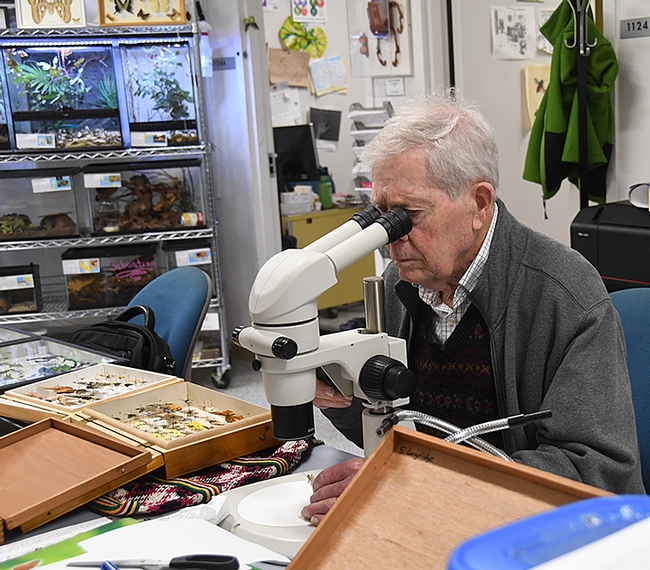
Jerry Powell, emeritus director of the Essig Museum of Entomology, examines a specimen under the microscope. (Photo by Kathy Keatley Garvey)
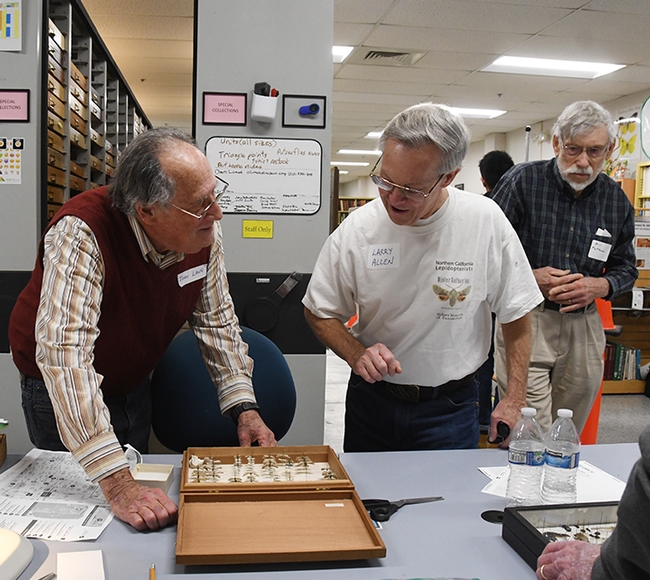
John Lane (left) and Larry Allen discuss specimens. At far right is Bill Patterson. (Photo by Kathy Keatley Garvey)
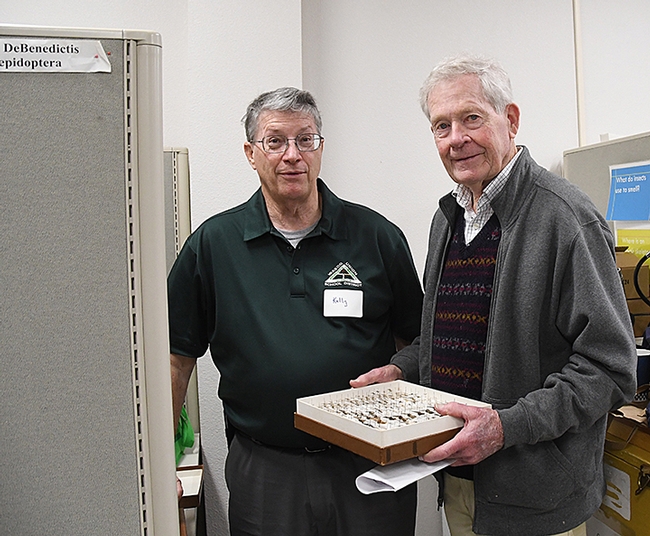
Kelly Richers (left) and Jerry Powell are key members of the Northern California Lepidopterists. (Photo by Kathy Keatley Garvey)
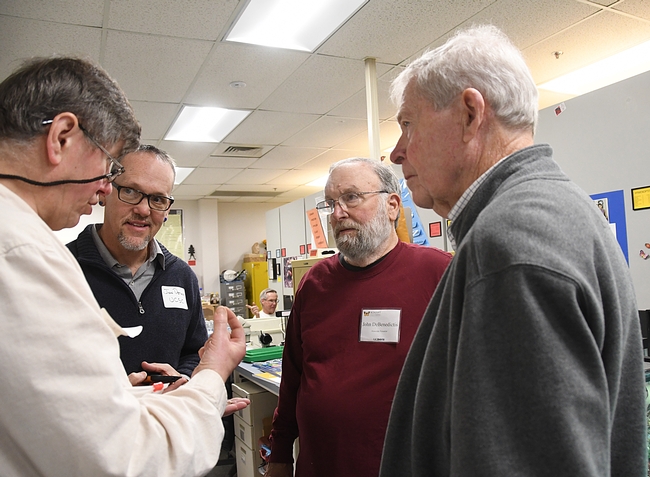
Engrossed in conversation are (from left) Max Klepikov, Jim Detla, John DeBenedictis and Jerry Powell. (Photo by Kathy Keatley Garvey)
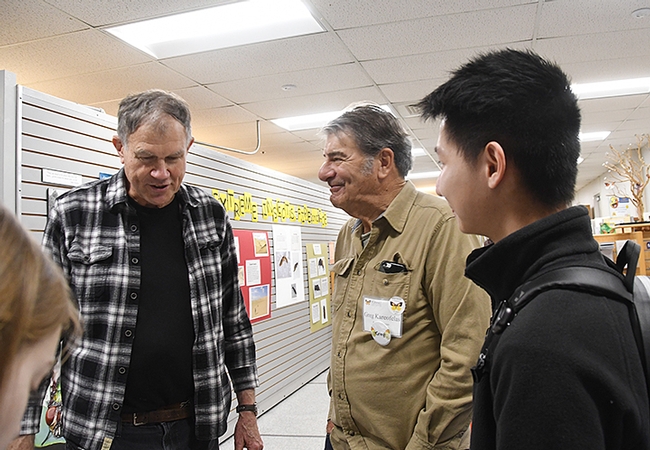
Rosser Garrison (left) retired from the California Department of Food and Agriculture and co-author of a dragonfly book, talks dragonflies with Greg Kareofelas (center) and Christopher Jason. (Photo by Kathy Keatley Garvey)
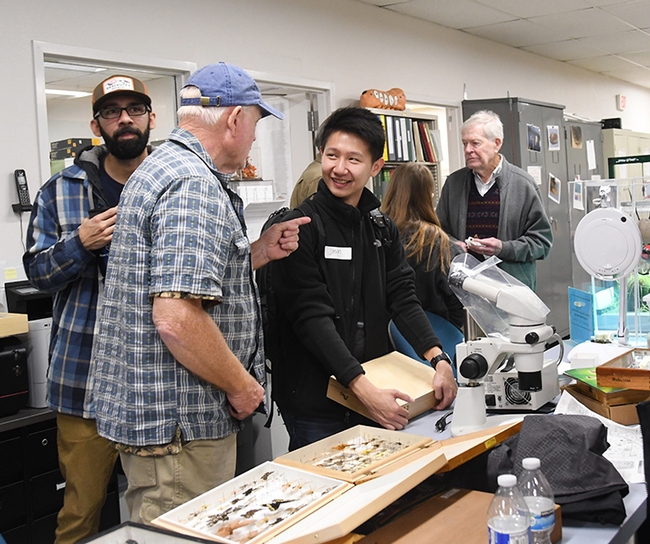
Engaged in conversations (from left) Joel Hernandez, Dick Meyer and Christopher Jason, all who received degrees from UC Davis. At far right is Jerry Powell, emeritus director of the Essig Museum. (Photo by Kathy Keatley Garvey)
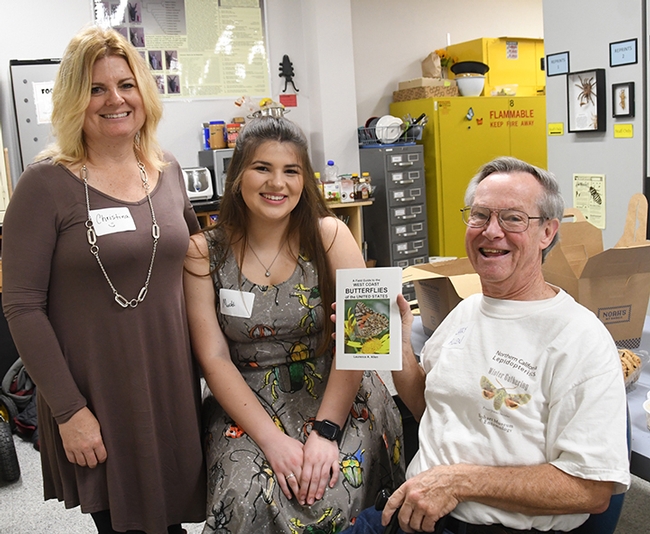
Author Lawrence "Larry" Allen shows his book to Christina Cunha (far left) of Modesto and her daughter, Madison Cunha, a self-described "aspiring entomologist." (Photo by Kathy Keatley Garvey)
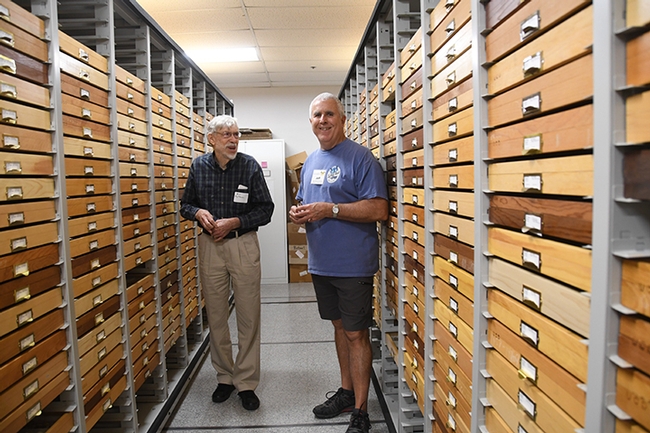
Bill Patterson (left), who holds a doctorate in entomology from UC Davis, and entomologist Jeff Smith, who curates the butterfly-moth section at the Bohart Museum of Entomology. (Photo by Kathy Keatley Garvey)
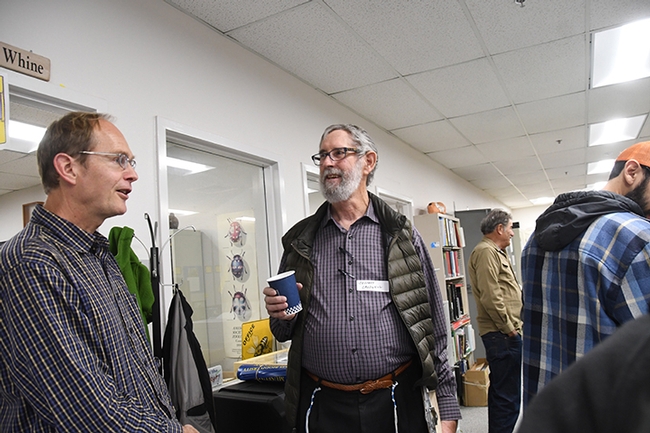
Don Miller (left), professor at Chico State University and butterfly hobbyist and ecological restorer Jeffrey Caldwell share knowledge. (Photo by Kathy Keatley Garvey)
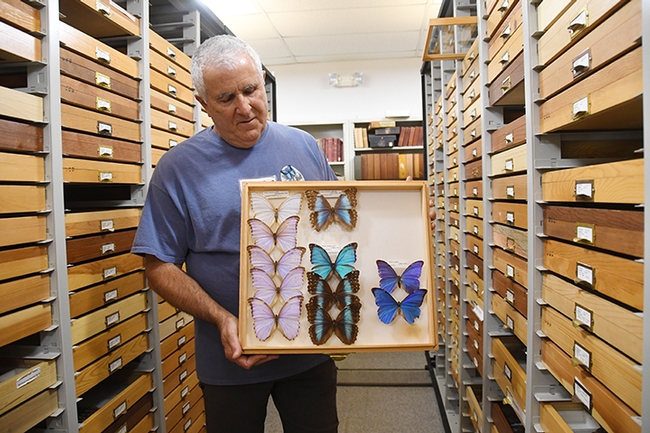
Entomologist Jeff Smith, who curates the Bohart Museum's collection of butterflies and moths, shows morpho butterflies. (Photo by Kathy Keatley Garvey)